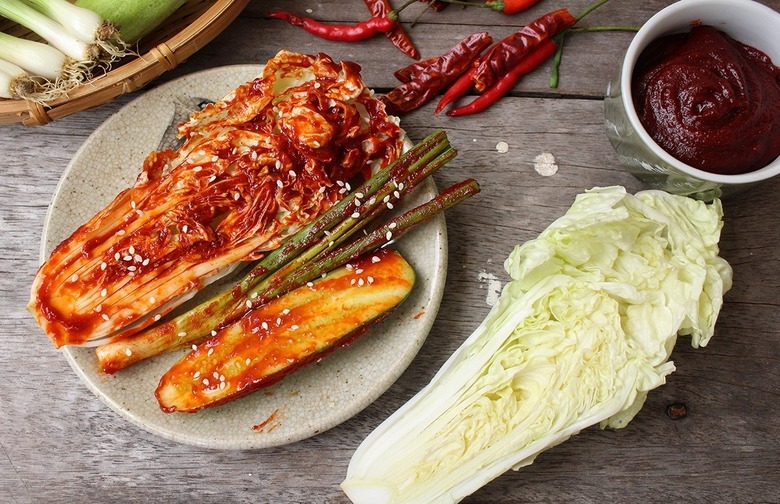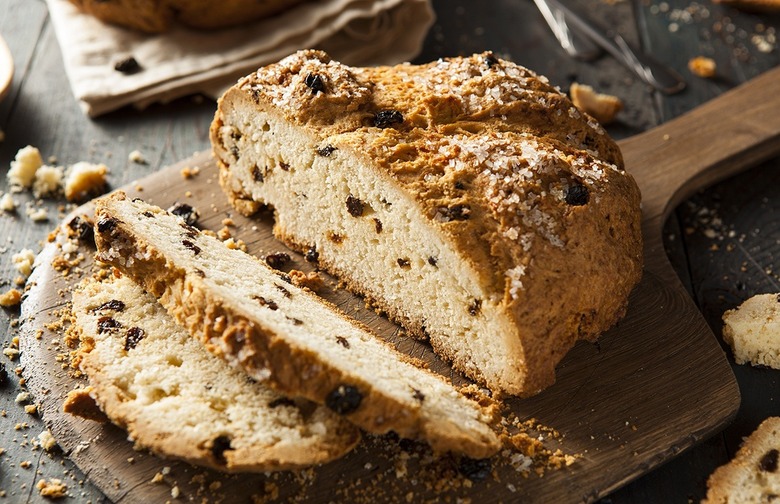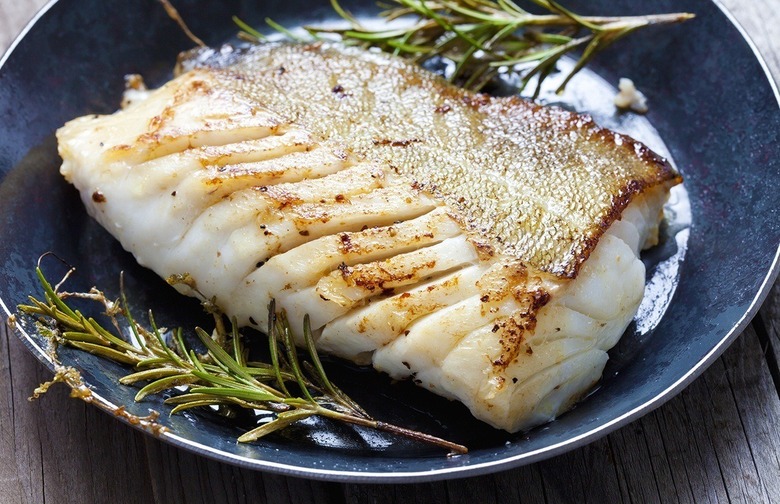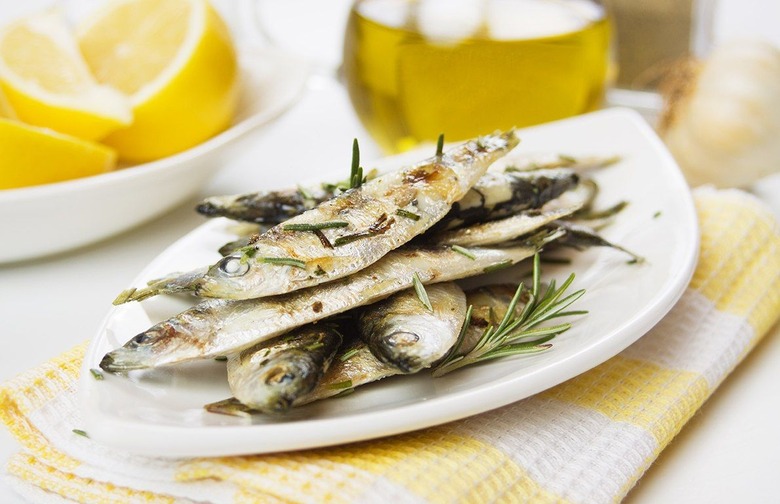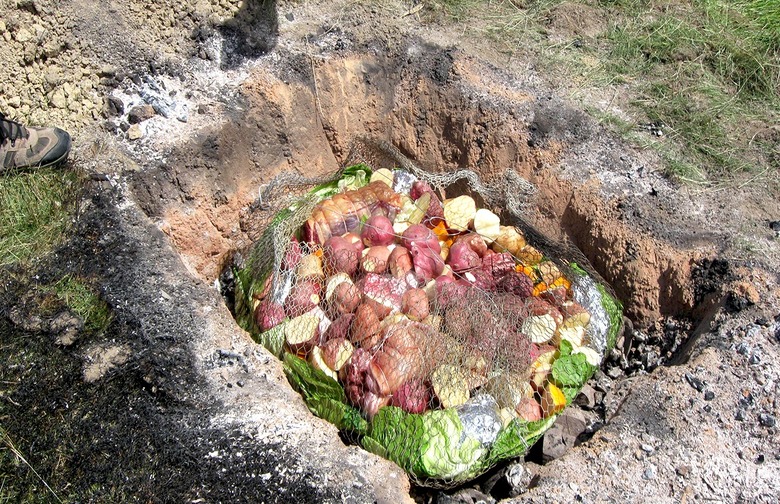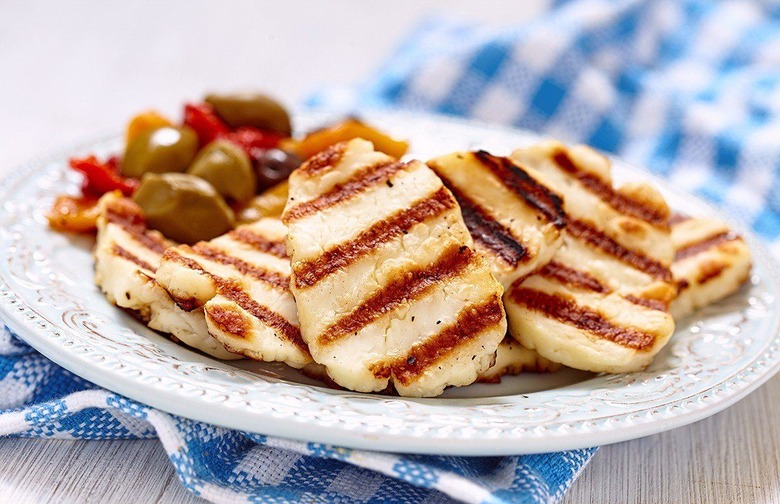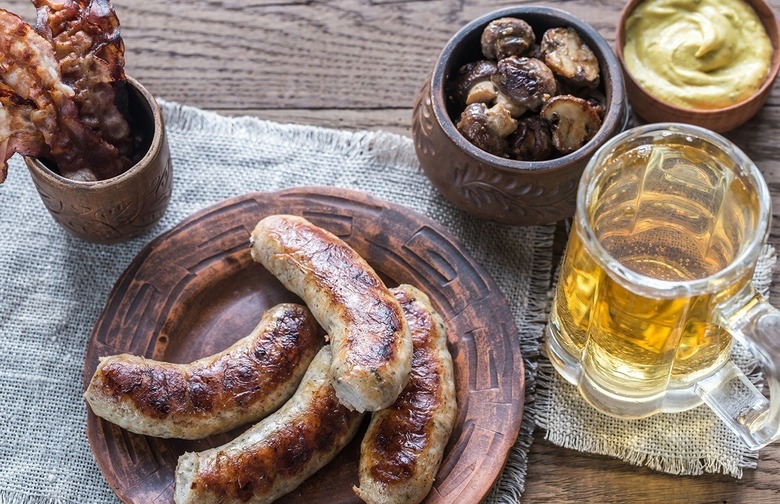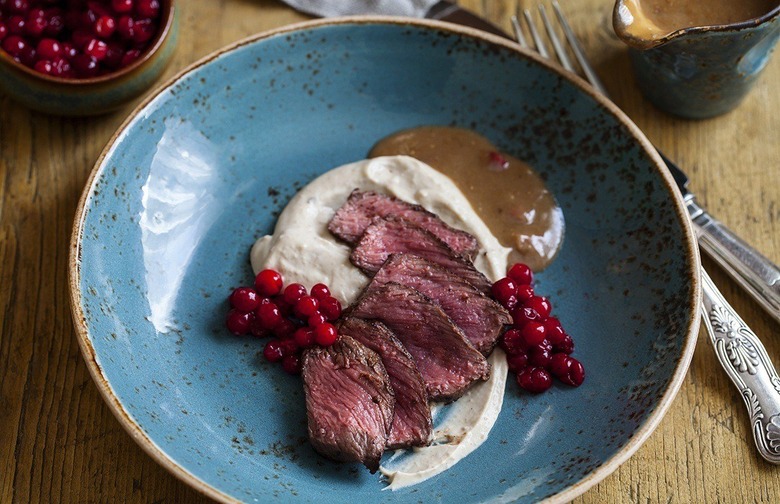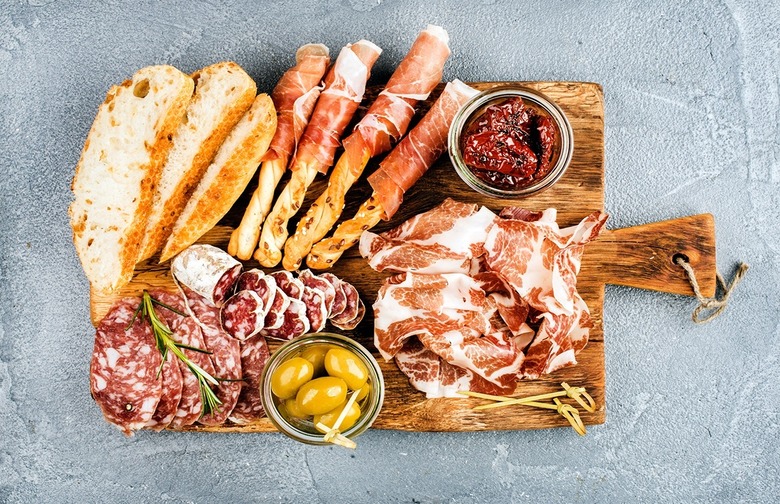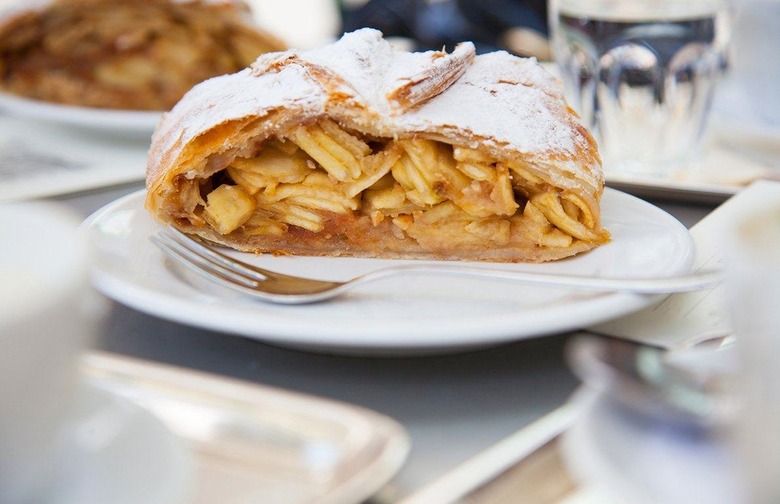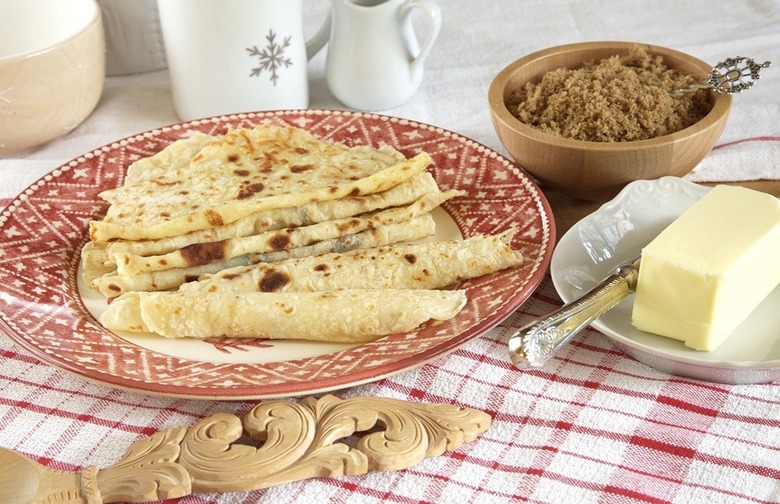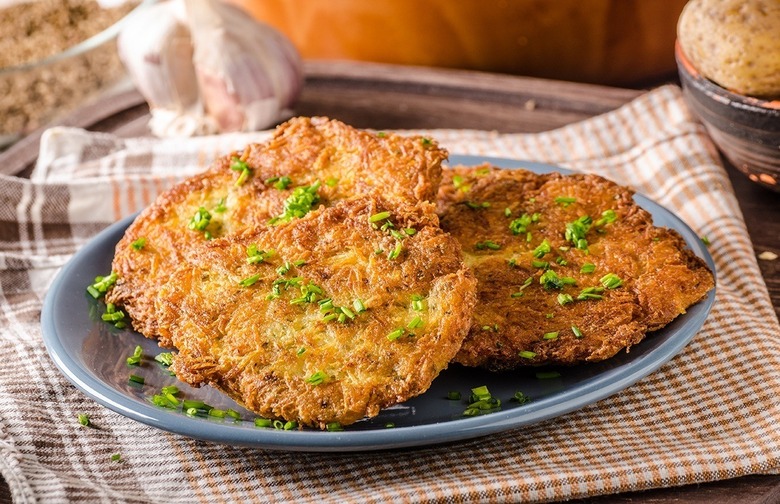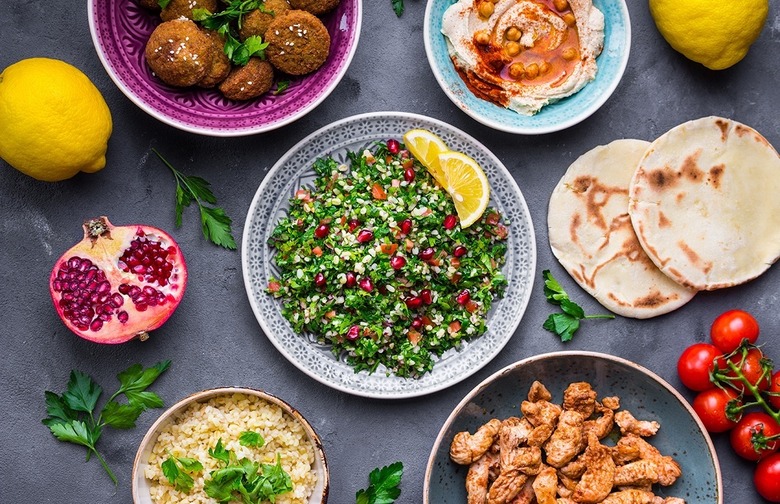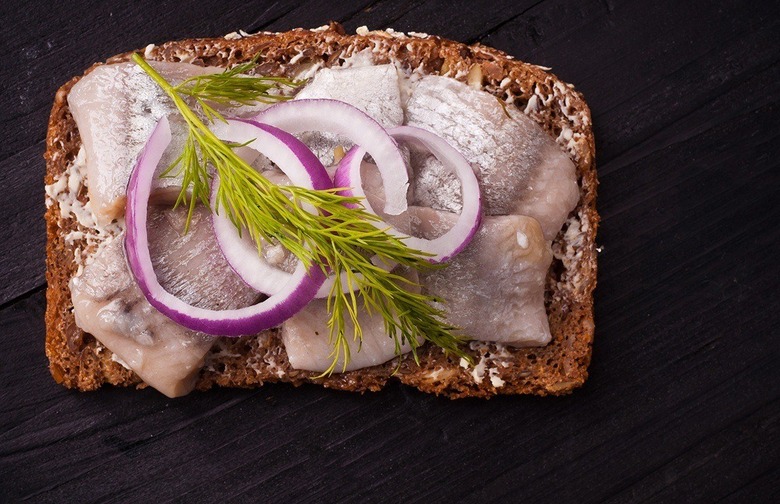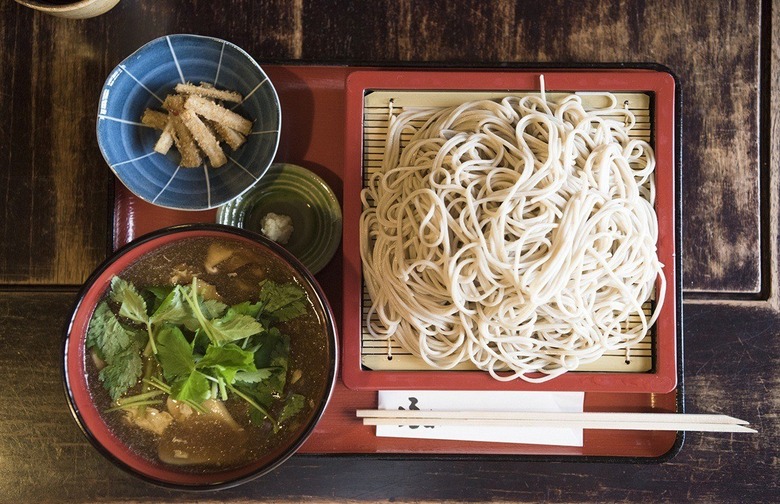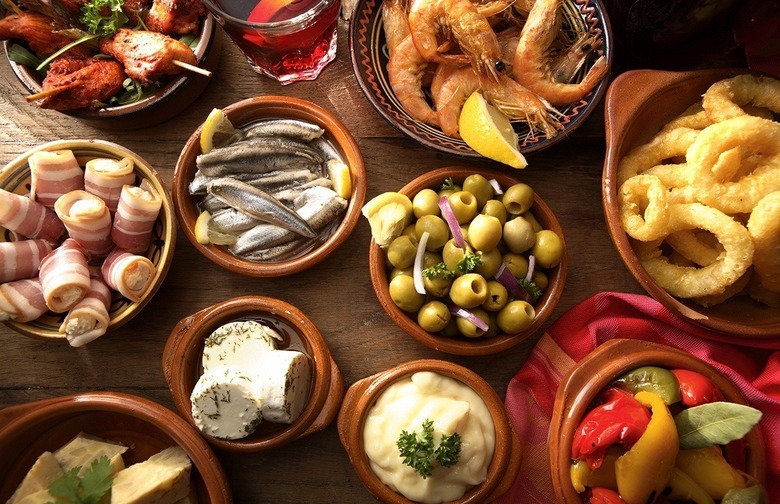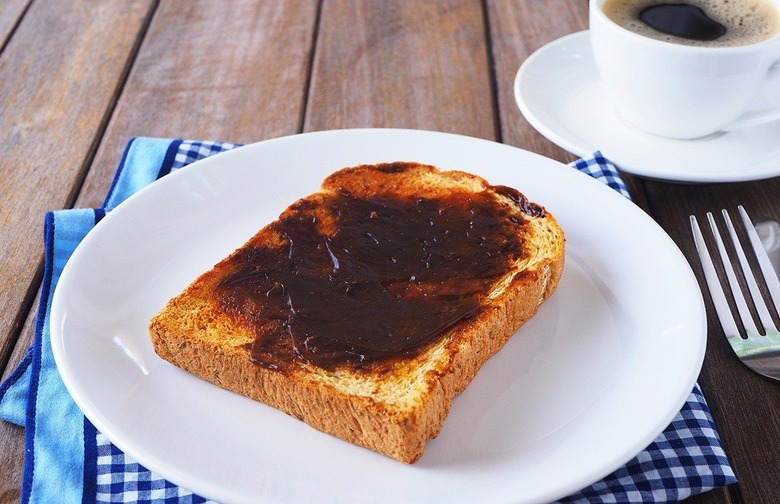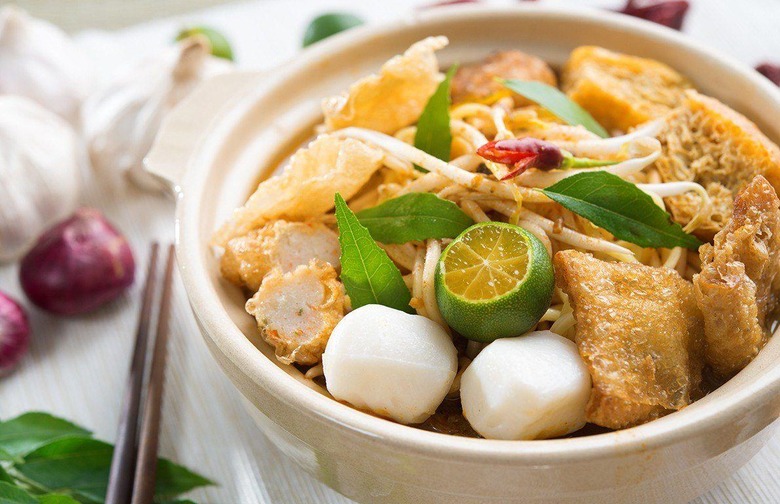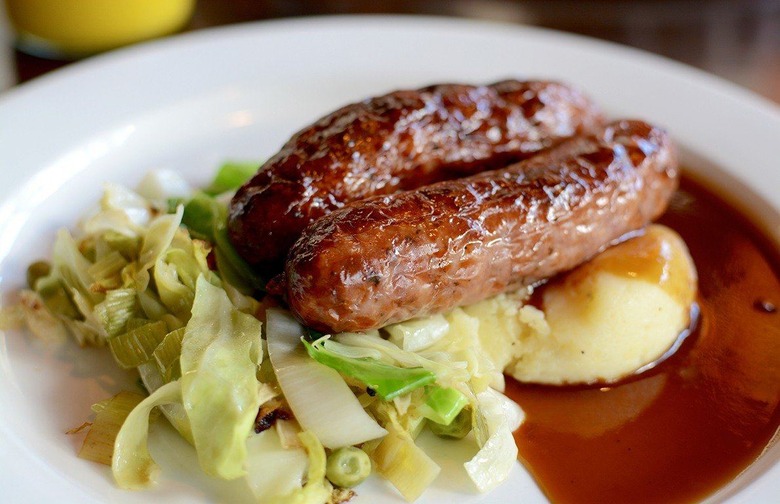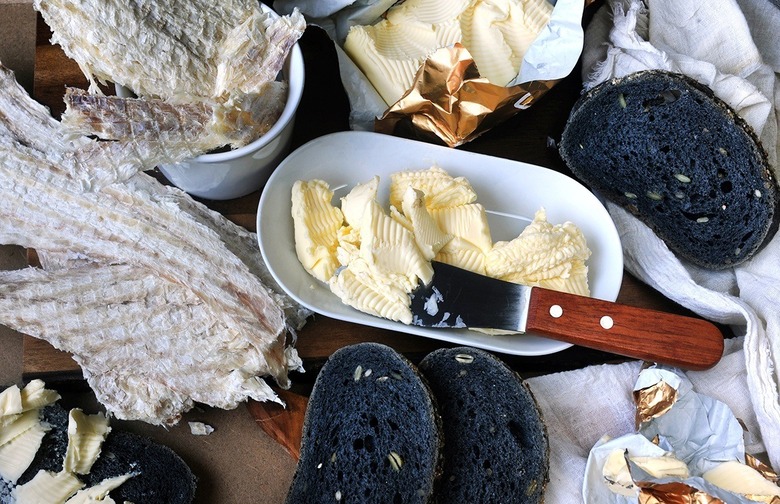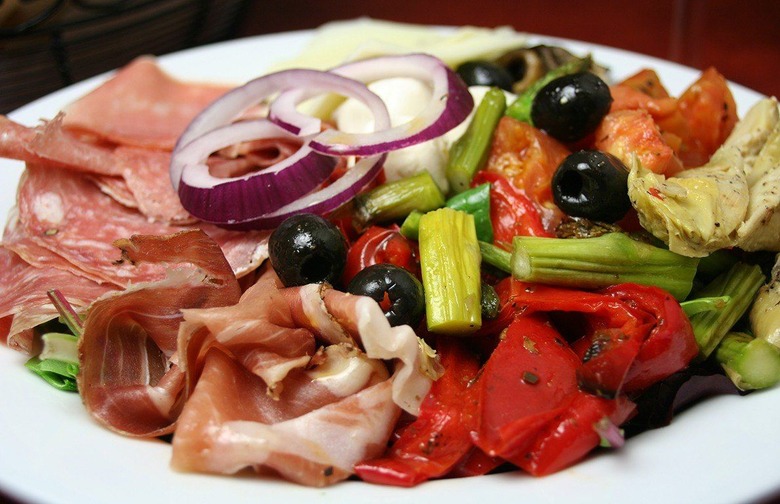This Is What People Eat In The World's 25 Healthiest Countries Slideshow
A small island off the southern coast of Italy, Malta sits isolated in the Mediterranean Sea. Maltese cuisine is an amalgamation of the many cultures that have occupied the island throughout the centuries, and is focused on rustic preparations of seasonal foods. Because Malta is an island nation, the local diet revolves around seafood, specifically bass, stonefish, grouper, white bream, swordfish, octopus, and squid. Other Mediterranean ingredients like olive oil, garlic, tomatoes, onions, and small game like rabbit are made into stews, soups, and pies. This diet is notably absent of heavily processed carbohydrates and red meat.
#24 South Korea
Because it is located on a peninsula, South Korean cuisine has historically been centered around seafood, but the country currently consumes a wide variety of livestock. That being said, a South Korean meal is marked by a balance of grains, legumes, and vegetables. Rice, although not native to the country, is featured with every meal, as well as kimchi — a piquant form of fermented cabbage. Animal proteins have grown in popularity, but soybeans, tofu, and mung beans still play a large role in South Korean meals.
#23 United Kingdom
The United Kingdom ruled a globe-spanning empire for centuries, and British cuisine retains many remnants of their imperial conquests. Though the British relinquished their control over the Indian empire in the mid-twentieth century, Indian food remains a foundation of British culinary culture, making up two-thirds of all eating out, according to Britain's Food Standards Agency. Indian food is centered around rice, vegetables, aromatic spices, and pungent sauces. More traditional British meals include eggs, bacon, sausage, and baked beans for breakfast; savory pies and puddings for lunch; and roasts, sausages, and of course, curries for dinner.
#22 Ireland
It's impossible to say Ireland and food in the same sentence without touching on the Irish Potato Famine — a natural catastrophe which led to two million deaths over the course of four years due to multiple potato crop failures. Ireland's population has never quite recovered, but Irish cuisine has evolved beyond just the potato. Ireland is famous for its soda bread, oatcake, mutton, butter, and black pudding — a traditional dish crafted from pig's blood, barley, and other seasonings. The Irish diet is well balanced, utilizing hearty vegetables like cabbage, potatoes, carrots, and onion, while also including whole grains and freshwater fish like trout and salmon.
#21 Portugal
Portuguese cuisine balances simplicity and elegance through a brilliant assembly of minimally prepared ingredients. The tiny country's western coast faces the Atlantic Ocean, which makes seafood a crucial component to almost every meal. Portugal has always had a bustling fish and seafood industry, and has Europe's highest fish consumption per capita. Cod is the fish of choice in Portugal, but everything from sardines to octopus, squid, cuttlefish, crab, and shrimps can be found served grilled and drizzled with olive oil or vinegar, and topped with garlic and fresh parsley.
#20 Greece
Similar to other Mediterranean countries, Greek cuisine is founded in seafood, legumes, seasonal produce, olive oil, and wine. Contemporary Greek cookery is in touch with the nation's historical roots. Grilled sardines, roasted potatoes, and chopped cucumbers, tomatoes, feta cheese, and Kalamata olives are all seasoned with a similar combination of lemon juice, olive oil, and oregano. Greece has become the posterchild for the Mediterranean diet, and the world can thank them for the introduction of their trendy, probiotic, and protein-packed yogurt. The country must be doing something right; they have one of the longest average lifespans in the world.
#19 New Zealand
The ingredients native and plentiful to New Zealand are far different from those available in Europe. The foods of the "Pacific Rim" include pork and venison, along with a wide variety of shellfish like crayfish, paua (abalone), mussels, scallops, and oysters; and of course, kiwi fruit. Instead of unhealthy cooking methods like deep frying, New Zealanders opt for barbecue. The smokiness imparted by "the pit" creates a flavor that is truly unique. One traditional New Zealand cooking method is the Maori hangi, where a deep hole is dug out and lined with burning hot stones and then covered with some sort of vegetation. A protein, such as chicken, pork, or lamb is added to the pit, along with vegetables, then the entire pit is sealed off and covered with dirt while the ingredients slowly steam to perfection.
#18 Cyprus
A lone island nation in the far eastern portion of the Mediterranean Sea, Cyprus' food culture has been shaped by its proximity to Lebanon, Turkey, Syria, and Greece. Like other Mediterranean countries, the people of Cyprus eat a diet rich in seafood, but the country's terrain is ideal for grazing sheep and goats. Cyprus is famous for halloumi cheese, a combination of goat and sheep milk that has a mildly salty flavor and rubbery texture, and is perfect brushed with olive oil and thrown on the grill. Lentils, okra, grape leaves stuffed with meat, rice, and herbs, and "louvi," a traditional Cypriot dish of black-eyed peas, vegetables, oil, salt, and lemon, are also very popular.
#17 Canada
Canada is one of the healthiest countries in the world, not necessarily because of the country's diet, but rather due to a publicly funded, universal healthcare system. Canadians eat a traditional "Western" diet, but also incorporate some iconic Canadian ingredients like salmon, cod, wild game (like caribou), and maple syrup. Despite being ranked the seventeenth healthiest country, Canada has the second highest concentration of fast-food outlets per capita at 200 per one million residents. (The U.S. is number one, with 224 fast-food outlets per million residents.)
#16 Germany
Germany has only 29 fast-food outlets per one million residents, around one-seventh that of Canada. The country's cuisine is distinct and meat-forward, with pork being its most popular protein. Germany has a long tradition of sausage or "wurst" making, and these links are usually served alongside a pungent and grainy mustard. Noodles (especially the egg-heavy spätzle), potatoes, and dumplings are some traditional starches, but vegetables like carrots, turnips, broccoli, cabbage, and asparagus are also quite popular. Germans are not known for their seafood, but pickled herring is their most iconic. Oh yeah, they also drink beer — lots and lots of beer.
#15 Finland
Finland is bordered by Russia (to the east) and Sweden (to the west). Unlike some of the other countries on this list, Finnish food is centered around whole-grain products like rye, barely, and oats. Pork is the most widely consumed meat, but Finland also has long history of hunting wild game such as deer, moose, hare, and grouse. The Finnish diet also relies on a variety of berries: lingonberries, wild raspberries, sea buckthorns, and wild strawberries are included in snacks and desserts. Being situated on the Baltic Sea, Finland has access to an abundant supply of fish, which are prepared via different methods such as frying, boiling, drying, salting, fermenting, and cold smoking. Mushrooms are also popular, and the delicate chanterelle are frequently featured in traditional Finnish dishes.
#14 France
The French have a reputation for being almost chauvinistically proud of their cuisine, but the country is undoubtedly a gastronomic pioneer. Classic French cuisine revolved around rich, cream-based sauces, luxurious ingredients, and impeccable technique, but traditional meals are much simpler, and usually consist of a stewed meat or a plate of charcuterie (sliced, cured meat), fresh vegetables, cheese, and breads (and yes, baguettes are popular). Fine foods and quality ingredients are appreciated and sought after, but they're consumed slowly and in moderation.
#13 Netherlands
The Netherlands is consistently one of the healthiest countries in the world, and in 2013 had an obesity rate of only 12 percent. The country has high taxes which pay for a range of social programs, including healthcare. The government is also willing to enact policies which encourage the population to eat healthier foods. The Dutch have a staggered eating pace which usually involves five small meals throughout the day: breakfast, koffietijd (coffee or tea time), lunch — which usually consists of bread, cold cuts, and cheese, another coffee or beer break, and finally a dinner of potatoes, meat, and vegetables.
#12 Austria
Austria might be famous for its Wiener schnitzel — veal that's been pounded paper-thin, breaded, and pan fried — but there's a lot more to this country's cuisine than just deep fried meat. Austria, which is smack-dab in the middle of Central Europe, is influenced heavily by German, Italian, and other Eastern European cultures. Unlike most of Western Europe, Austria is still a heavily wooded country, and game meats like deer, wild boar, and pheasant are frequently incorporated into dishes. Breakfast and lunch are simple, consisting of a continental style meal of bread with jam, cold meat, or cheese. Dinner is the main meal of the day, composed of a protein, a clear soup, a dumpling, and some pickled or cured vegetable. Austrian dessert is usually a strudel.
#11 Norway
Another Scandinavian country on the list, the Norwegians have historically only eaten the foods readily available to them, which was usually fish and wild game. A typical breakfast involves lefse — a classic flatbread made with potatoes, flour, butter, and cream — and an assortment of jams, smoked fish, or salami. Norwegians are also big milk drinkers, annually consuming a staggering 160 quarts per person.
#10 Luxembourg
Luxembourg is a tiny country with a population of around half a million, but despite its size, it offers big flavors and humble dishes. Like Germany, many of Luxembourg's iconic dishes are of peasant origin. Common foods are sausages, Gromperekichelcher — a delicately spiced potato pancake, and different forms of pâté.
#9 Israel
Israeli cuisine is like a twentieth century history lesson in that it is an edible product of the Jewish diaspora. After World War II, Jews from all over the world came back to Israel to call it home. They brought with them cooking techniques from Central and Eastern Europe, the Middle East, Northern Africa, America, and the Mediterranean. Staples of Israeli cookery are hummus, falafel, Israeli salad (cucumber, tomatoes, and olive oil), tabbouleh (bulgur salad), stuffed grape leaves, grilled meats, shawarma, and pita bread. But what truly makes a dish "Israeli" is the use of spices like cumin, za'atar, aniseed, and dried mint.
#8 Sweden
Known for being simultaneously healthy and happy, Sweden must be doing something right. Traditional Swedish dishes include, pork, fish, cereal grains, milk, potatoes, root vegetables, and carrots. Porridge or muesli with jam, cinnamon, or sugar is a common breakfast, while cold-smoked and cured fish served over crisps or as open-face sandwiches on dense black breads make up a traditional Swedish lunch. Dumplings made with pork, liver, potatoes, and even blueberries are also usual accoutrements to the Swedish dinner table. Although they eat three main meals, it's a popular custom to take a coffee or snack break once or twice a day. This slight pause in the day is helpful in suppressing cravings.
#7 Japan
Japanese cuisine changed dramatically following World War II, after the country was introduced to Western food staples like powdered milk and wheat. Japan has since reverted back to traditional ingredients with a renewed emphasis on rice, miso, soy, seaweed, and local fish. Japanese meals often consist of a soup, three side dishes, and rice. Each component is served on separate dishes, contrary to Western style meals that serve each individual out of a large vessel. Sashimi (raw, sliced fish), sushi, pickled vegetables, soba noodles, tofu, grilled fish, and ramen are all popular options. One notable characteristic of Japanese food is the sparing use of red meat, dairy products, and frying oils.
#6 Spain
Many well-traveled gastronomes will concede that Spain is the pinnacle of culinary accomplishments (sorry France). The delicate assembly of artisanal ingredients puts the country in a class of its own. In Spain, eating is a ritual. Breakfast is modest, consisting of nothing more than a café con leche — strong coffee with steamed milk, toast, preserves, and mild cheese. A small snack is scheduled between breakfast and lunch, but the main meal comes mid-day, at between 2:00 and 2:30 p.m. This hour-long event features a spattering of small courses called tapas. Tapas are inspired by Mediterranean ingredients and can range from simple dishes like aceitunas (olives filled with anchovies and red bell peppers) or setas al ajillo (mushrooms cooked with olive oil and garlic), to more elaborate calamares (ring battered squid), bacalao (thinly sliced salted cod loin), and gambas (sautéed prawns in a pepper sauce). However, the foundation of Spanish cuisine is always fresh ingredients, quality seafood, pungent spices, and real extra-virgin olive oil.
#5 Australia
Through the centuries, Australia has been occupied by a variety of different groups, each imparting their own spin on the cuisine. A typical breakfast includes fruit, eggs, bacon, juice, and Vegemite — a thick food spread made from brewer's yeast meant to compete with British Marmite, a similar product. The signature dish of Australia is the meat pie, which is often filled with ground beef — an estimated 260 million pies are consumed every year (that's 15 per person). Australia has the world's third largest fishing zone, which provides the country with copious amounts of high quality seafood, and as a result the country is a leading exporter of lobster, prawns, tuna, salmon, and abalone.
#4 Singapore
The range of ingredients, cooking techniques, and flavors of Singaporean cuisine is staggering. The fourth healthiest country in the world draws inspiration from China, Malaysia, and India with stir-fried noodles, curried fish head, bean curd, hot ginger tea, and the brutally pungent durian fruit. There are so many diverse foods available that it's hard to identify a "Singaporean diet," but most meals involve a noodle, soup, rice, curry, or seafood. Some standout dishes are Fish Ball Mee (noodles, fish balls, chili paste) Chwee Kueh (steamed rice cakes, preserved radish, chili sauce), and Laska (coconut seafood curry noodle soup).
#3 Switzerland
The Swiss are known internationally for their cheese and fondue, but Switzerland was predominantly a country of farmers, and this history of humble peasantry and connection permeates throughout their food. Classic Swiss dishes are derived from some combination of cheese, potato, and pastry dough. But this minimalist approach results in a simply elegant cuisine. Leeks with potatoes and sausage, Basel-style roasted flour soup, polenta with braised beef, and onion tarts are just a few Swiss specialties.
#2 Iceland
Unfortunately for Iceland, this remarkably healthy country has been plagued by both a misleading name (the island is not that icy) and an infamous national dish of rotted shark flesh, which even Anthony Bourdain struggled to eat. Classic Icelandic cuisine still relies on seafood, but haddock, halibut, herring, and shrimp have replaced the fermented shark. Prior to globalization, sheep was the most popular meat in Iceland, but a variety of seabirds like puffins and great black-backed gull were also hunted. As an island, Iceland is cautious when it comes to foreign meat because, due to its isolation, much of the livestock hasn't developed resistance to common bacteria. Dairy (especially the increasingly popular skyr yogurt) is a foundation of the Icelandic diet, with the average person consuming about 100 gallons of dairy products per year.
#1 Italy
It might be hard to believe, but the land of mozzarella, pasta, gelato, and red wine is ranked the healthiest country in the world. But Italy is much more than just ravioli and pasta Bolognese. The country juts out into the Mediterranean Sea, and there are dramatic regional variations along the north-south expanse. However, the structure of the meal is more or less the same wherever you go. Dining is ceremonial, and the entire process is revered, with some meals consisting of three to four full courses. This style of eating may appear gluttonous, but it is far from it. The pace and control of the meal is artfully orchestrated. It starts with an aperitivo (appetizer) like a small glass of fortified wine or vermouth to open the palate. The next course is the antipasta which may include prosciutto, mortadella, or another form of charcuterie. This is followed by the primo, or first course, a light pasta, soup, polenta, or risotto. The secendo is the main course involving the protein and side dish. The meal, however, is still not over. An entire course is dedicated to local cheese and seasonal fruit, which is then followed by a dessert. Coffee can be served during or after dessert, and the entire meal is capped off with a digestive, like grappa, amaro, or limoncello, which helps the stomach settle and process the meal.

